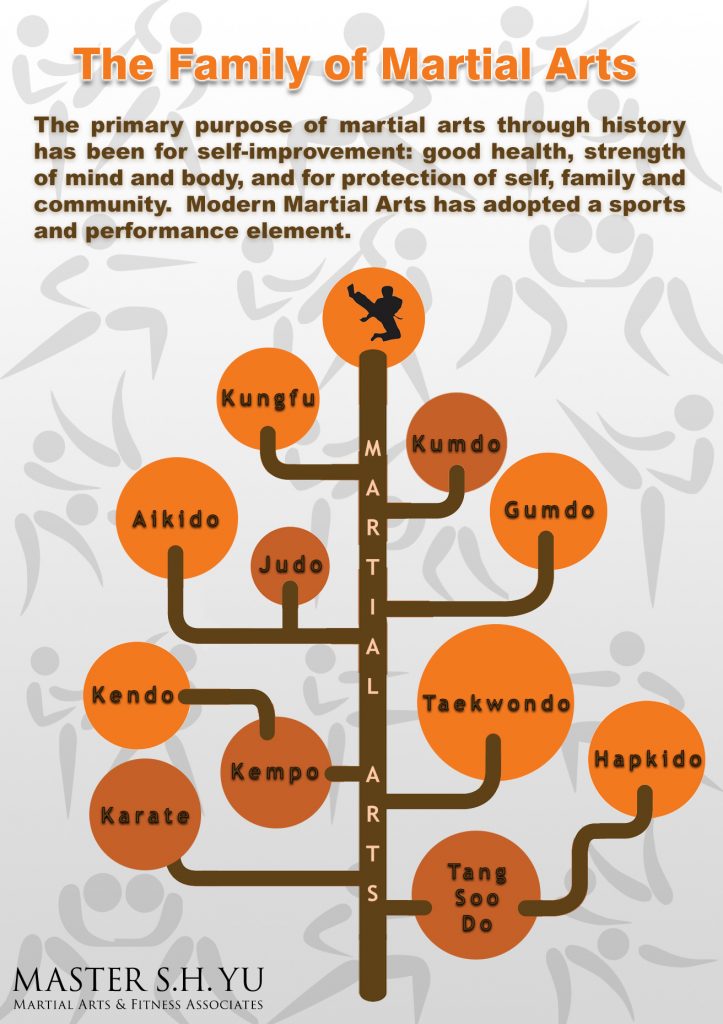The Growth And Progression Of Martial Arts: Looking Up Its Roots From Ancient Times To Contemporary Practices
The Growth And Progression Of Martial Arts: Looking Up Its Roots From Ancient Times To Contemporary Practices
Blog Article
Post By-Dinesen Sommer
Enter the globe of martial arts, where ancient beginnings and modern-day methods collide in an electrifying journey of discipline and self-discovery.
As you explore the history and development of this fascinating art type, prepare to be mesmerized by the cultural influences, technical advancements, and profound ideology that have formed it over centuries.
From the battlefields of old worlds to the training grounds of today, martial arts have actually stood the test of time, frequently adapting and expanding.
Each strike, each activity, carries with it the weight of countless years of custom and wisdom, gave via generations. This is a story of resilience, of warriors who sought not just physical expertise, but also self-confidence and consistency.
Join us on this exceptional expedition as we reveal the tricks, the tales, and the transformational power of martial arts.
Prepare yourself to be inspired, challenged, and for life changed by the background and development of martial arts.
Cultural Impacts on Martial Arts
As you check out the background and development of martial arts, you'll quickly find the fascinating methods which cultural influences have shaped these combat strategies.
From the ancient people of China and India to the more current growths in Japan and Brazil, martial arts have actually been heavily influenced by the cultures in which they stemmed.
For example, Chinese martial arts, such as Martial Art and Tai Chi, are deeply rooted in the philosophy of Taoism and the principle of Yin and Yang.
In contrast, Japanese martial arts, like Karate and Judo, mirror the samurai warrior customs and the worths of technique and honor.
Likewise, Brazilian fighting style, Capoeira, incorporates aspects of African dancing and songs, reflecting the cultural heritage of African slaves in Brazil.
These social influences not just give each fighting style its special qualities but likewise give a deeper understanding of the historic and social contexts in which they progressed.
Technical Advancements and Martial Arts
With the rise of innovative weapons and cutting-edge training tools, you have actually been able to enhance your abilities and adapt to the ever-changing combat landscape.
Technical innovations have actually changed the method martial arts are exercised and taught. Virtual reality simulations currently enable you to learn sensible combat scenarios without the danger of physical injury. High-speed cameras capture every relocation, allowing you to evaluate and perfect your techniques. Wearable tools monitor your heart rate, breathing, and muscle mass activation, offering immediate feedback on your efficiency.
Additionally, the development of specialized tools, such as resistance bands and dexterity ladders, has enabled you to boost your speed, stamina, and agility. https://www.washingtonpost.com/local/legal-issues/secrecy-shrouds-case-involving-maryland-lawyers/2021/11/18/724af20e-463b-11ec-95dc-5f2a96e00fa3_story.html have not just made training extra efficient yet have actually additionally pushed the limits of what is feasible in martial arts, permitting you to get to new elevations in your practice.
The Philosophy and Principles of Martial Arts
The ideology and concepts of martial arts are deeply rooted fit your state of mind and instilling self-control, focus, and respect in your technique.
1. Attitude: Martial Arts teaches you to develop a strong and resistant way of thinking. https://drugdefenseattorneyinnear20874.blogunok.com/30492727/methods-for-locating-the-perfect-criminal-justice-attorney-for-your-instance enables you to get over challenges both on and off the floor covering, pushing your limitations and persevering when faced with hardship.
2. Discipline: Martial Arts demands self-control and self-control. Through routine training and adherence to stringent guidelines and strategies, you learn to regulate your impulses and create a strong work values.
3. Emphasis: Martial Arts needs extreme focus and concentration. By training your mind to be present in the moment, you boost your capacity to respond swiftly and efficiently throughout fight circumstances.
4. Respect: Martial Arts emphasizes regard for oneself, instructors, educating companions, and opponents. It educates you to value the skills and experiences of others, promoting a feeling of camaraderie and sportsmanship.
Conclusion
Congratulations on completing your journey through the fascinating world of martial arts! Throughout this exploration, you have actually experienced the abundant background and amazing development of these combat practices.
From their ancient origins to the modern-day techniques we see today, martial arts have been formed by cultural influences.
The assimilation of innovation has actually also played a considerable function in reinventing the way martial arts are educated and exercised in the here and now day.
Nevertheless, it is very important to bear in mind that martial arts are more than simply physical fight. They encompass profound philosophies and leading principles that surpass the simple act of fighting.
Take a minute to reflect on this obsolete journey and appreciate just how the tradition of martial arts continues to thrive in the here and now, going beyond time and borders.
